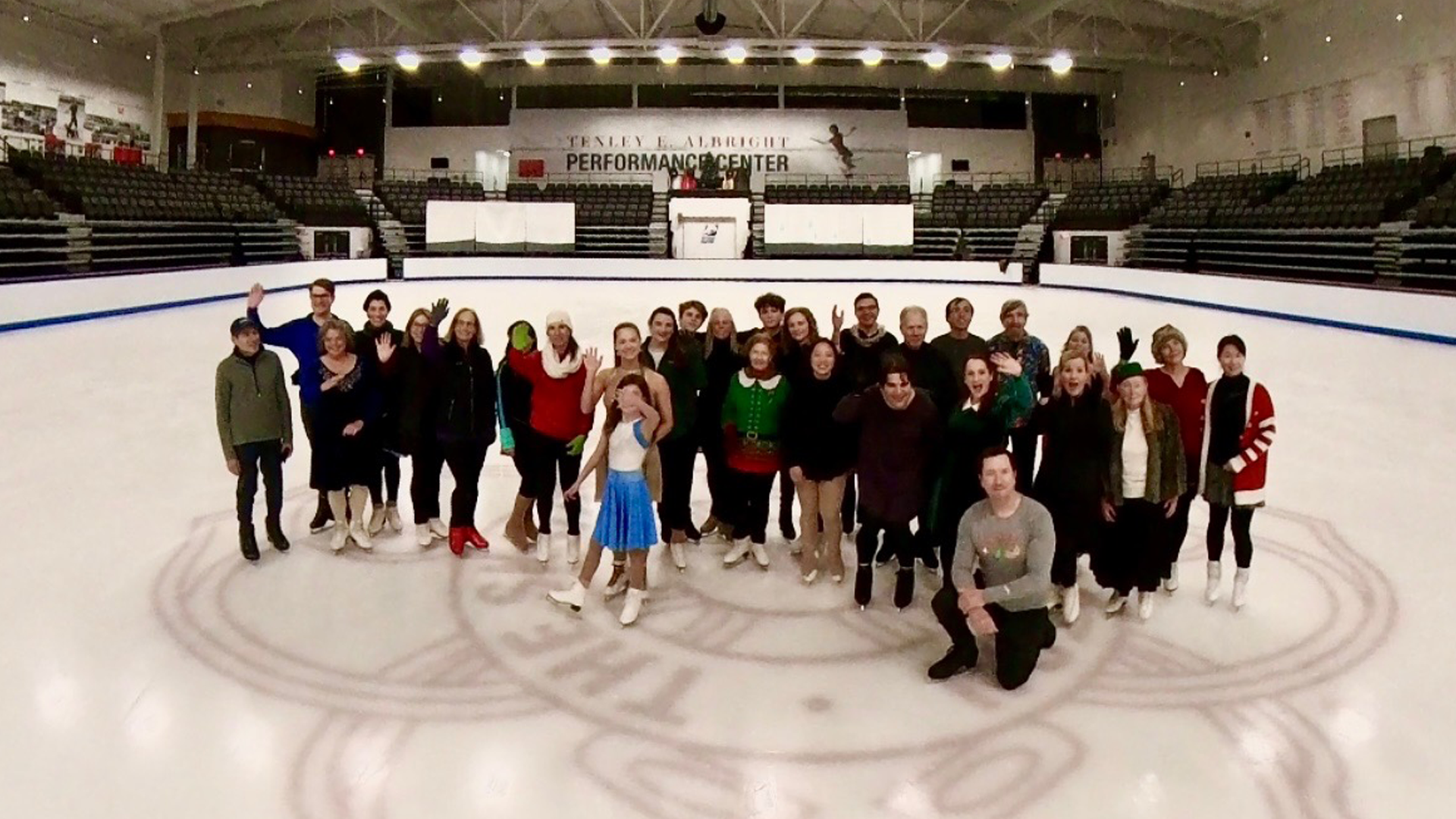
Social Ice Dancing
What is social ice dancing?
Before it was an Olympic discipline, ice dance had a long history as a social activity that attracted skaters and families to figure-skating clubs. Clubs, including The Skating Club of Boston, had weekly sessions of social ice dancing that were family events and often included off-ice activities. Social ice dancing was at the heart of the Club’s skating community.
Today, social ice dances are mostly done at ice dance weekends or at special Club sessions. The dances are selected from the dance patterns of the U.S. Figure Skating test structure, plus several dances unique to social ice dancing. There are no test requirements, although it’s best if you feel comfortable with a dance before stepping out on the ice. The key to success is knowing the steps and staying on the correct pattern, beat and edge. That said, if you don’t know a dance and would like to learn it, most dancers are happy to talk you through the steps.
You don’t have to come with a partner. It’s expected that you will try to dance with a partner and switch partners frequently. Although this may sound scary, it works pretty well and it’s a great way to improve your dancing. It’s all fun; no one is judging your style. The most-experienced dancers always find something nice to say to their partner at the end of a dance. Don’t ever be shy about asking someone to dance.
How is it organized?
It’s all for fun, but to avoid chaos there is a tried and true formal structure to every social ice dance. First, everyone dances the same dance. Pairs form a line. Once the music starts, each pair starts one measure after the previous pair. If there are any solo dancers, they follow the pairs. The music ends when the last pair skated twice around the rink. It’s considered poor form to pass other pairs. If you are a slower pair, make a smaller pattern on the inside; if you want to go faster, use a big pattern, but make sure that you don’t cross over other people’s pattern and always yield to avoid collisions.
The upcoming dances are listed on a board so that dancers can plan ahead and find partners. Each dance is usually played twice, giving everyone the opportunity to skate each dance even when there is a mismatch among the number of dancers.
Each ice dance session starts with easy dances that everyone can do. Later, the dances are alternating between easier and more difficult ones. Requests for less common dances can usually be accommodated.
Beginners and all ages are welcome!
Even if you have not done any ice dancing, you are welcome to try it out! The preliminary dances are all easy to learn, forward skating. The Skating Club of Boston occasionally has workshops to teach the steps. Ice dancing can be a wonderful family activity so all ages are welcome.
Save the Dates
for Friday Night Social Ice Dance
at The Skating Club of Boston
- Chilly Cha Cha – March 14
- World Penguin Day: Black & White Ball – April 25th
- Spring Swing – May 30th
- Summertime Blues – June 27th
Schedule is tentative, check back for times and details, everyone is welcome. Club members are free, small fee for non-members.
